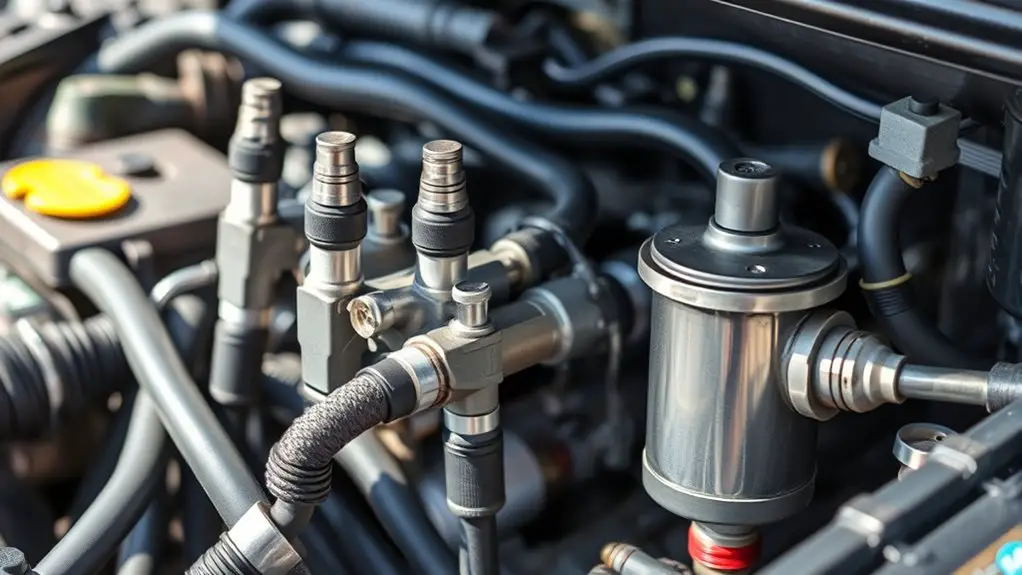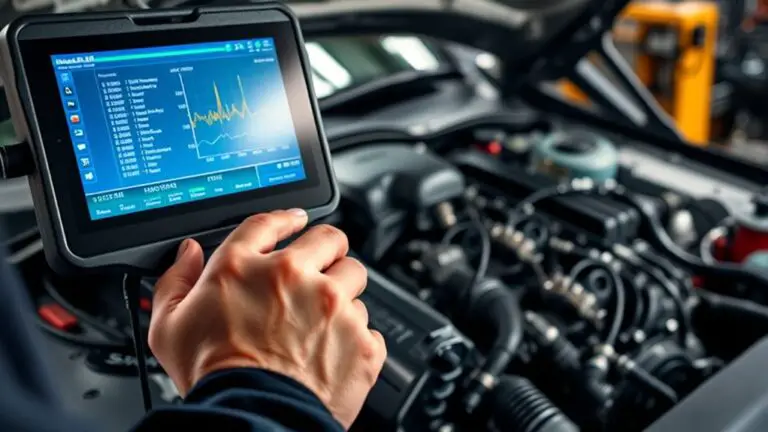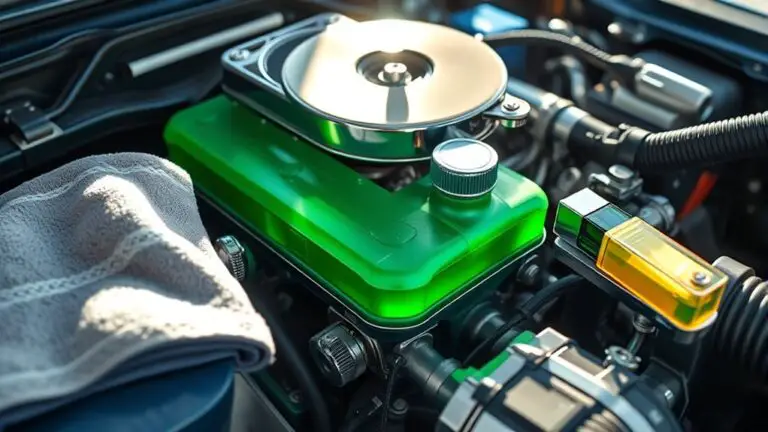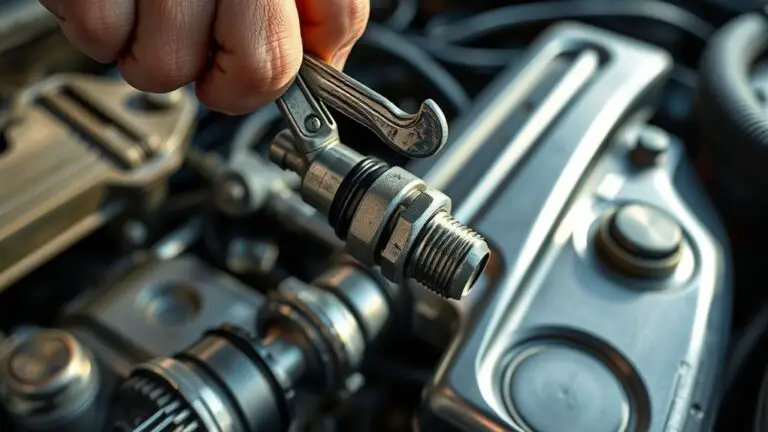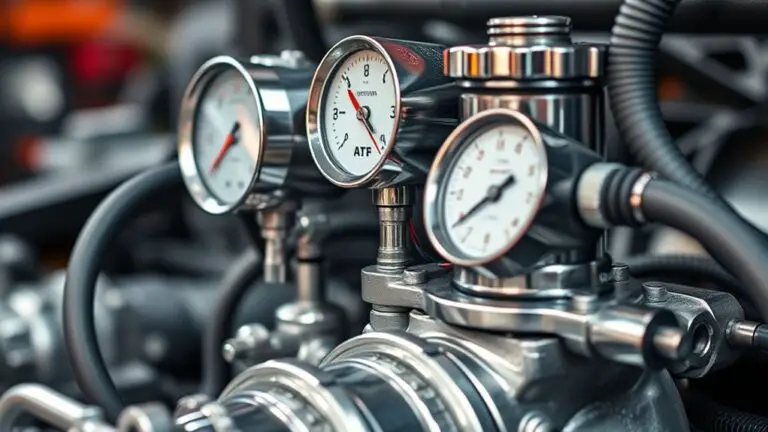How to Diagnose Poor Fuel Economy in a Gasoline Sedan Fuel System
To diagnose poor fuel economy in a gasoline sedan, start by establishing a baseline with precise tank, odometer, and fill-up data, then inspect the fuel, air, and ignition systems. Check tire pressures and wear, then review driving habits for efficiency opportunities. Inspect the intake path, air filter, throttle body, fuel pressure, and injectors for faults or restrictions. Scan for DTCs, service overdue maintenance, and verify spark plugs and coils. If issues persist, professional testing can pinpoint root causes and corrections. If you keep digging, you’ll uncover more actionable steps.
Assessing Signs of Dropping Fuel Efficiency
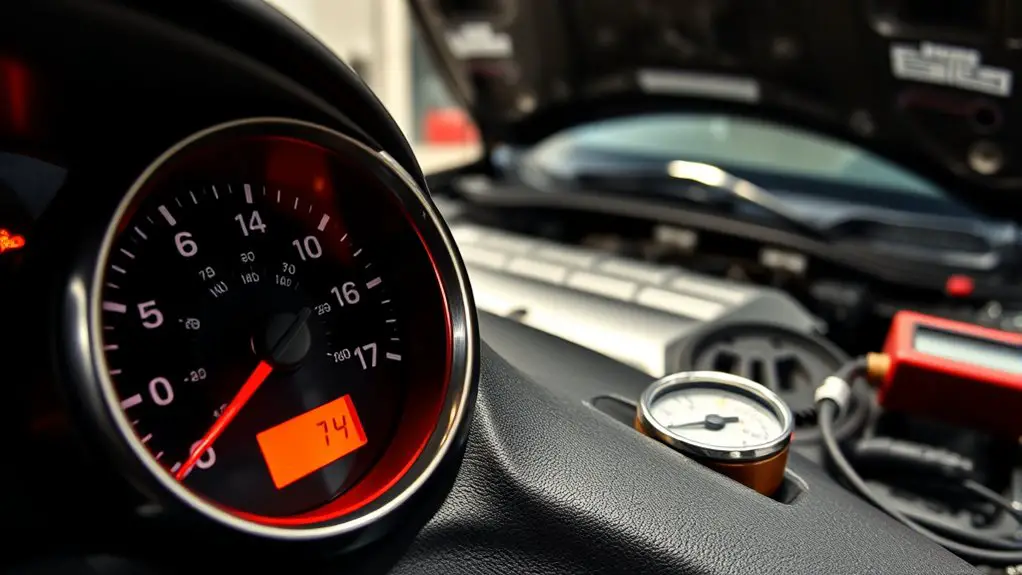
If you’ve noticed a sudden or gradual drop in your sedan’s miles per gallon, begin by establishing a baseline and tracking recent changes. You’ll compare current fuel usage to reference values from prior tanks, noting variance, time frame, and driving conditions. Assess engine performance indicators such as idle stability, smooth acceleration, and exhaust color, since subtle deviations often signal root causes beyond mere consumption. Monitor fuel system behavior: misfires, hesitations, or knocking can accompany efficiency loss and merit diagnostic checks. Review maintenance history for overdue filters, spark plugs, and air intake cleanliness, as these directly impact combustion efficiency. Consider fuel additives only after confirming standard service intervals, as improper use can mask symptoms or alter measurements. Document fuel economy trends with precise odometer, tank volume, and fill-up data. If signs persist, segment the diagnosis into mechanical and systemic factors, focusing on engine performance metrics, without conflating with tire or driving habit factors. Prioritize verifiable improvements and plan targeted tests.
Checking Tire Condition and Driving Habits
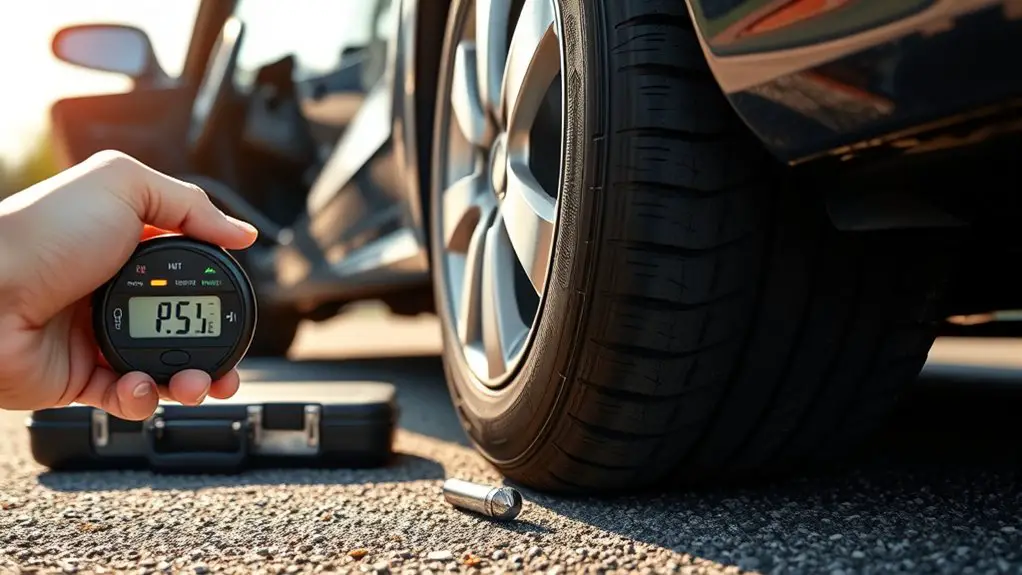
Tire condition and driving habits directly affect fuel economy, so start by inspecting tread depth and wear patterns, plus correct tire pressures across all four corners. You’ll confirm uniform wear, then measure tread with a gauge, noting any cupping or feathering that signals suspension issues or alignment drift. Next, verify tire pressure when cold, adjusting to the manufacturer’s recommended range for your load and speed. Underinflation raises rolling resistance, while overinflation reduces contact patch, both harming economy and handling. With tires set, review driving speed and cadence: sustained high speeds spike aerodynamic drag, while frequent rapid acceleration wastes fuel. Adopt steady, moderate speeds and smooth throttle inputs to minimize energy losses. Consider tire age and replacement intervals, since aged tires lose grip and efficiency. Document findings, then implement precise corrections: correct pressures, rotate tires per schedule, and promote a calm, predictable driving style to preserve fuel economy without sacrificing safety.
Inspecting the Air Intake System
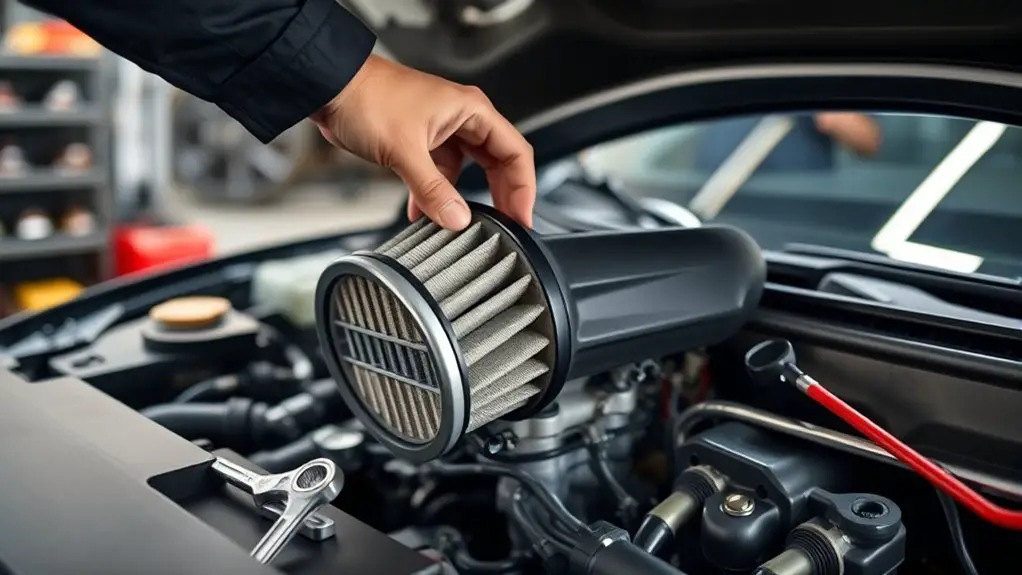
You’ll start with the air intake system by checking for airflow issues, ensuring there are no obstructions or leaks in the intake path. Inspect the air filter and ducts for clogging, cracks, or loose connections, replacing or sealing as needed. Finally, review the throttle body and related sensors for proper operation, cleaning or calibrating as required to maintain accurate airflow measurements.
Airflow Intake Issues
Airflow intake issues can directly impact fuel economy, so begin by inspecting the intake pathway for obstructions and leaks. You’ll systematically verify that ducting is sealed and free of cracks, splits, and loose clamps. Check for debris in the intake tract, which can restrict airflow and skew sensor readings. Inspect the air filter for texture, transparency, and clogging; a dirty element reduces volume and increases engine work. Evaluate the alignment of hoses and the intercooler (where applicable) to guarantee no vacuum leaks. Use the airflow meter as a diagnostic reference point to confirm smooth, consistent readings across throttle positions. If readings spike or drop unexpectedly, isolate components and reseal connections before rechecking performance. Maintain clear, unobstructed pathways to preserve peak fuel economy.
Filter and Duct Check
Beginning with a tight inspection of the filter and ducts helps confirm that the intake path remains unobstructed and properly sealed. You assess the fuel filter and duct integrity, identifying any cracks, loose clamps, or gaps that could introduce unmetered air. Remove debris from the air box inlet and verify hoses are firmly connected without signs of collapse. Check for filter media wear and verify the filter color matches the service interval. Ducts should be free of holes and properly routed to prevent vacuum leaks. Record findings and replace components as needed to preserve intake performance.
| Item | Condition | Action |
|---|---|---|
| Fuel filter | OK / degraded | Replace if degraded |
| Intake duct | Sealed / cracked | Seal or replace |
| Clamps | Tight / loose | Tighten or replace |
| Air box | Clean / dirty | Clean as needed |
| Connections | Intact / leaking | Repair leaks |
Throttle and Sensors
A thorough throttle and sensor inspection begins by confirming that the throttle body operates smoothly and that sensors in the intake system read accurately. You’ll test throttle response with the engine at idle and at light to moderate acceleration, noting any lag, sticking, or unevenness. Inspect the air intake for leaks, cracks, or loose connections that could skew readings and dilute performance. Use a diagnostic scan tool to verify sensor calibration, ensuring the MAF, MAP, and IAT sensors align with expected values across RPM ranges. Check for carbon buildup on the throttle plate, which can impede airflow. Document deviations, then recalibrate as needed or replace faulty components to restore consistent fuel-air mixture and ideal throttle response.
Evaluating the Fuel System and Spark Components
To diagnose fuel economy issues, start by inspecting both the fuel system and the spark components for faults that commonly degrade efficiency. You’ll assess fuel delivery consistency, fuel pressure, and injector operation, noting any irregular spray patterns or timing concerns. Perform a careful fuel filter check to rule out restriction that increases pump load. Next, evaluate the ignition path: verify coil health, wiring integrity, and the overall spark timing. For a focused assessment, conduct a fuel injector evaluation to confirm proper atomization and flow rate, and perform a spark plug inspection to ascertain electrodes remain correctly gapped and free of fouling. Replace worn components only with compatible parts, and document readings for comparison over time. Keep a disciplined approach, isolating symptoms from root causes. When both systems show stability, you reduce the likelihood of unseen issues and move toward confirming the root cause of reduced miles per gallon.
Scanning for Diagnostic Trouble Codes (DTCs)
You are trained on data up to October 2023.
Performing Basic Maintenance Fixes and Refills
Performing basic maintenance fixes and refills starts with a systematic check of your vehicle’s essential systems and fluids. You’ll verify fluid levels, tire pressures, and the integrity of hoses and belts, then assess the air intake for obstructions. Next, inspect the fuel system for leaks and unusual smells, and confirm the fuel filter is clean or replaceable. When you’re ready, focus on fuel economy-critical components: fuel injectors cleaning, ensuring spray patterns are uniform and atomization is intact. If indicators show rough idle or misfire, clean or service injectors to restore peak fuel delivery. Simultaneously, perform oil changes at manufacturer-recommended intervals to minimize sludge formation and friction losses. Replace the oil filter, choose the correct viscosity for your climate, and reset maintenance reminders. Finally, check the spark plugs for wear and replace as needed. Maintain detailed records of all performed tasks for future diagnostics.
When to Seek Professional Help and Next Steps
If you’ve completed routine maintenance and addressed obvious fuel-economy issues but still notice persistent symptoms—such as sudden drops in mpg, ongoing rough idle, or unusual engine sounds—it’s time to seek professional evaluation.
If issues persist after routine maintenance, seek professional evaluation for precise, measurably repeatable diagnostics.
A professional diagnostics approach guarantees a structured path to clarity. You’ll benefit from a focused fuel system analysis, cold-start and running-condition tests, and data-driven fault isolation to prevent guesswork.
1) Prepare a concise symptom log and maintenance history to optimize diagnostic time.
2) Expect a staged evaluation: initial assessment, targeted testing, and documented recommendations with cost estimates.
3) Confirm prioritization of repairs based on safety, driveability, and long-term efficiency implications.
Next steps include selecting a trusted shop, requesting breakdowns of findings, and outlining a corrective plan. This approach preserves your freedom to drive with confidence, while guaranteeing results are repeatable and measurable through professional diagnostics and rigorous fuel system analysis.
Frequently Asked Questions
How Does Altitude Affect Fuel Economy in a Gasoline Sedan?
Altitude can reduce fuel economy in a gasoline sedan because air is thinner, lowering engine power and altering air density. You’ll see a slight drop in MPG at higher elevations unless you adjust the fuel mixture. Do altitude adjustments, and verify the fuel mixture remains lean but stable under load. If you notice poor response, recalibrate the ECU or carburetor as needed, and maintain tires, weight, and transmission efficiency to minimize the impact.
Can Weather Conditions Skew Mpg Readings on Long Trips?
Did you know that small weather shifts can swing mpg by up to several percent on long trips? Yes—weather conditions can skew mpg readings. You’ll notice weather impact from headwinds, rain, and humidity, while temperature fluctuations affect air density and fuel mixture. Track fuel economy across conditions, and normalize for temperature to compare legs. If you’re chasing precision, log outside temp, wind, and fuel fill timing; repeat tests to isolate weather effects.
Do Newer Tires or Wheel Alignment Influence Efficiency Measurements?
Yes, newer tires and proper alignment can affect efficiency measurements. You’ll want to keep tire pressure at the recommended level and schedule regular alignment checks. When tires are underinflated or out of spec, rolling resistance rises, skewing mpg readings. Confirm you measure tire pressure cold, document alignment results, and adjust as needed. Accurate figures rely on consistent tire pressure and verified alignment; these steps keep your efficiency data honest and your ride responsive.
Will Eco/Eco+ Driving Modes Impact Real-World Fuel Use?
In many cases, eco and eco+ modes reduce real-world fuel use by limiting throttle response and shifting transmission timing. For example, you notice smoother acceleration and steadier speeds on a daily commute. Eco mode benefits include lower pump bills, while eco plus drawbacks are slower acceleration and reduced climate control effectiveness. You’ll gain efficiency, but you may trade performance and comfort. If you value freedom, test both modes on your routes to determine personal impact.
Do Aftermarket Exhaust Components Alter Fuel Economy?
Do aftermarket exhaust components alter fuel economy? Generally, they can impact performance gains more than efficiency, with modest gains or losses depending on flow, backpressure, and engine tuning. You’ll notice potential power increases and altered throttle response, but mileage may drop if you push the engine harder to exploit the gains. To stay precise, test with consistent driving and monitor real-world fuel use as you assess any claimed performance gains.

